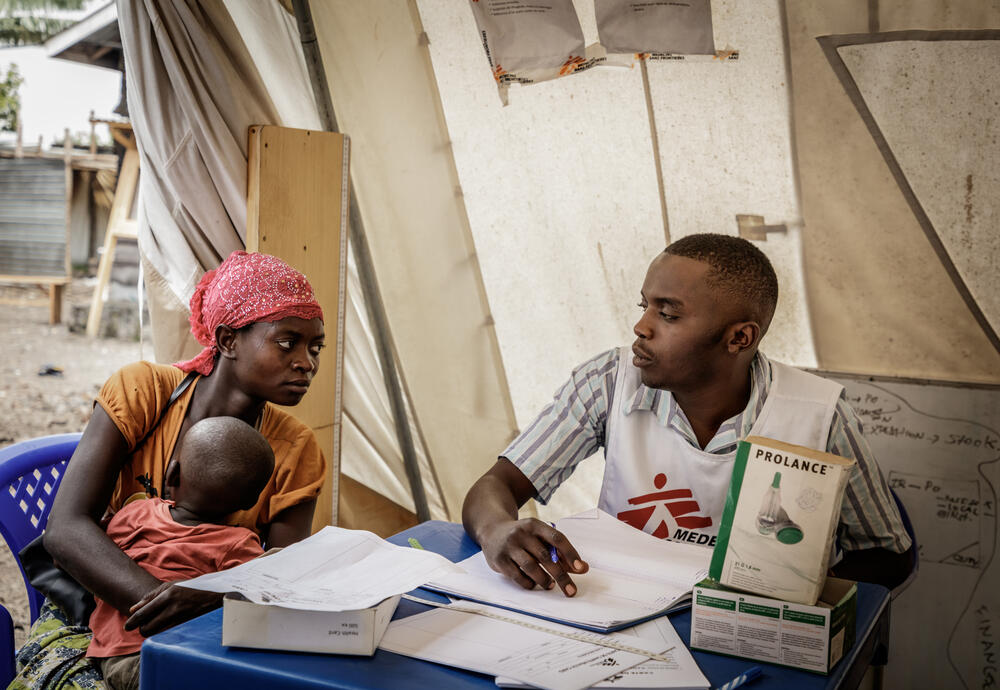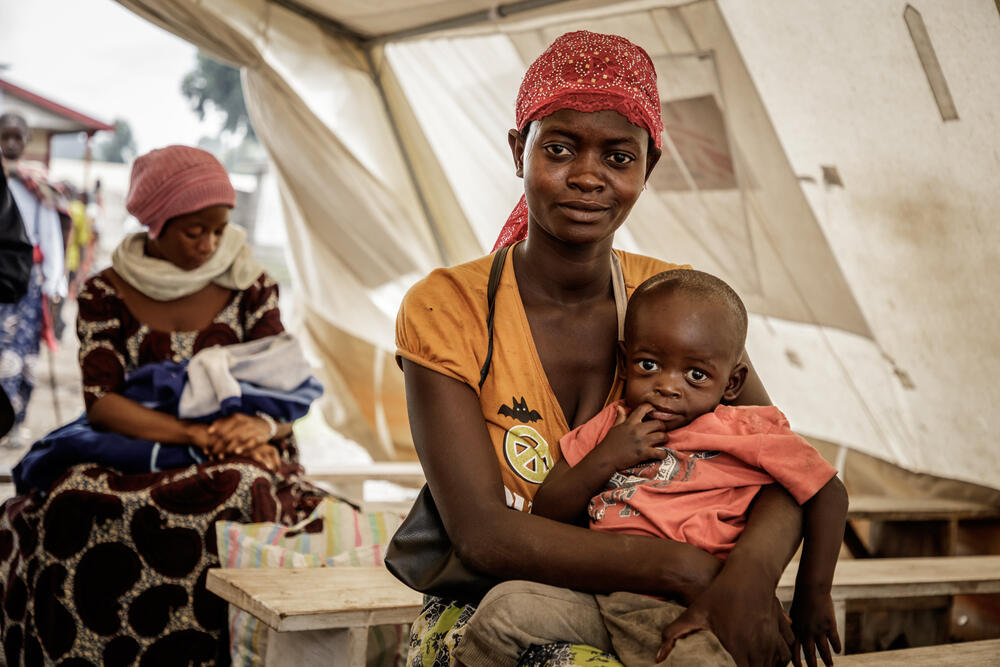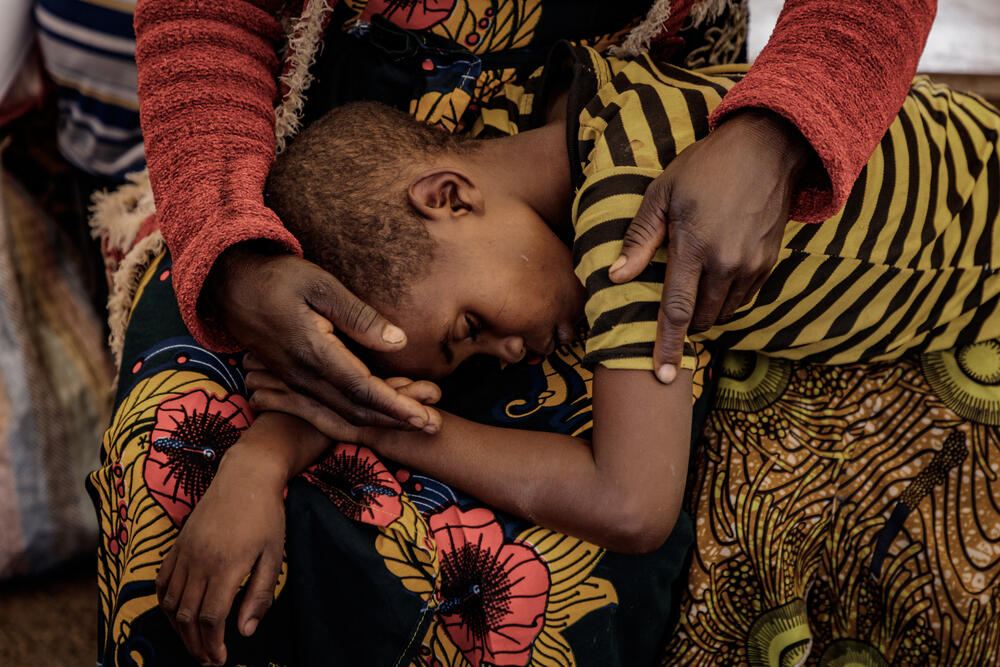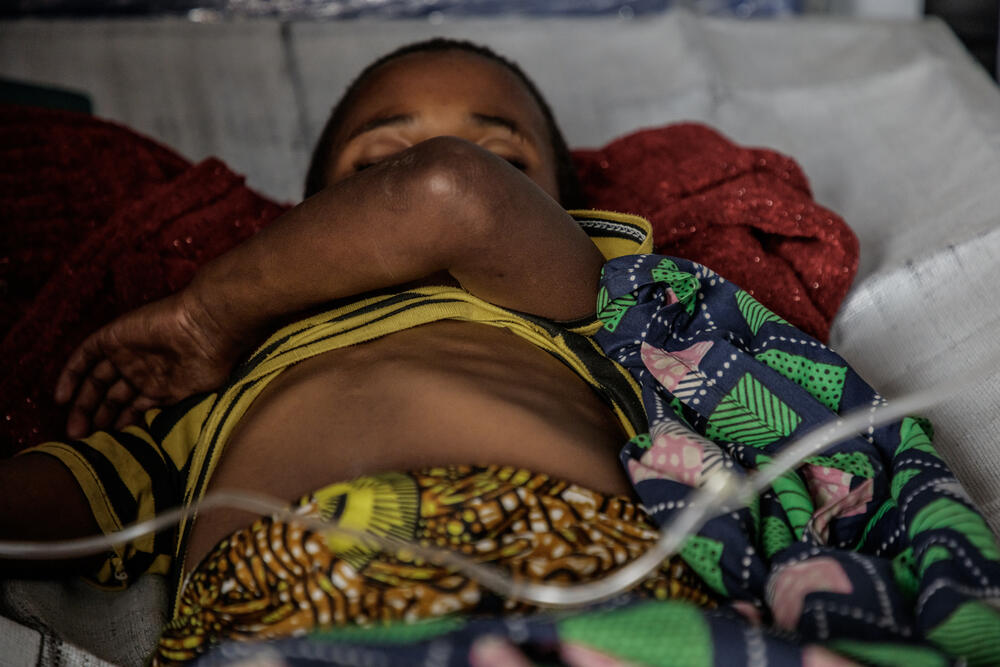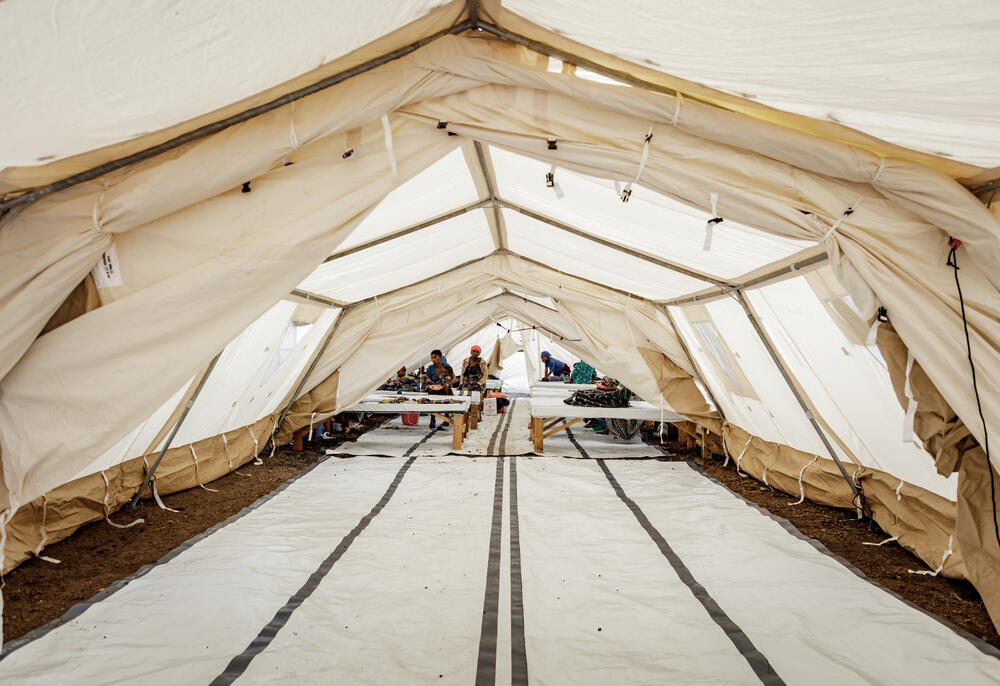“What we feared is happening” with an increase in cholera among displaced people in DRC
9 December 2022
In just 10 days, the number of people suspected of having cholera has increased alarmingly in Nyiragongo territory, east of Democratic Republic of Congo (DRC). Between 26 November and 7 December, 256 patients were admitted to the cholera treatment centre set up by Médecins Sans Frontières (MSF) teams in Munigi; a third of patients were children under five.
Since the end of October, tens of thousands of people fleeing fighting with the M23 group have joined those already settled for months in sites for displaced people in Nyiragongo territory, a few kilometres north of Goma, the capital of North Kivu. The humanitarian situation there is worsening as, next to the host communities, more than 177,000 people1 are now trapped in dire conditions, at the mercy of bad weather and epidemics.
“Given the lack of food, shelter, latrines and showers, all the ingredients are there for a health disaster,” says Simplice Ngar-One, MSF project coordinator. “The increase in cholera cases in recent days is another indicator of the deteriorating situation and the blatant lack of humanitarian assistance.”
Conditions conducive to cholera
"I fled my village with my six children and my husband a month ago and since then we have received almost no help”, says Nyira Safari, who is sitting with her daughter Zawadi in the MSF-supported Kanyaruchinya health centre.
“We have neither showers nor toilets. To feed my family, I go to the fields to try to find some potatoes, despite the risks involved,” says Nyira. “For two days, Zawadi has been suffering from diarrhoea and vomiting. She was very weak and could barely stand. That’s why I came here.”
Zawadi, 8, is among the patients with suspected cholera arriving daily to be treated by MSF in the supported facilities in Kanyaruchinya and Munigi, two areas where many displaced people have settled.
“What we feared is happening: the number of people with suspected cases of cholera is increasing due to the dismal living conditions, including increased proximity with other people, in informal settlements,” says Dr Alain Bishikwabo Irenge, medical officer in charge of the cholera treatment centre in Munigi.
“We have set up two additional tents to accommodate the large number of patients and increase our capacity to 100 beds,” says Dr Bishikwabo Irenge. “We will also intensify community activities to raise awareness and ensure early detection, as too many patients arrive in an already severe state of dehydration.”
Visible consequences of the lack of assistance
The first confirmed cases of cholera were reported in August in Kanyaruchinya, triggering MSF teams to undertake a cholera vaccination campaign for around 6,000 people in September. In early November, as new cholera cases were confirmed, our teams carried out a new vaccination campaign for 3,600 people to help stop the spread.
“Since July, we have been warning about the health risks, including epidemics, for displaced communities in Nyiragongo territory,” says Ngar-One. “New, massive displacements of people since the end of October have exacerbated an already extremely precarious situation.”
Months after people arrive in sites for the displaced, they still lack most basic needs. Some people are sleeping on the ground, under simple mosquito nets, along the road. There are not enough sanitation facilities, including toilets and showers.
“Here at the Kanyaruchinya health centre, we have dozens of patients coming in every day with diarrhoea, respiratory issues and skin infections”, says Ngar-One. “With the teams from the Ministry of Health, we treat the visible consequences of the lack of humanitarian aid.”
“Despite our repeated calls, the current humanitarian response is far from adequate,” continues Ngar-One. “That is just not understandable, as these people are only a few kilometres from Goma, home to many humanitarian organisations.”
An average of 250 free consultations have been provided daily since early November at the Kanyaruchinya health centre. An advanced health post will soon be set up at the informal site called Bassin du Congo in Munigi. MSF teams are also continuing to provide water at six sites in Kanyaruchinya and Munigi, have installed hand-washing points, and are carrying out numerous awareness-raising activities.
